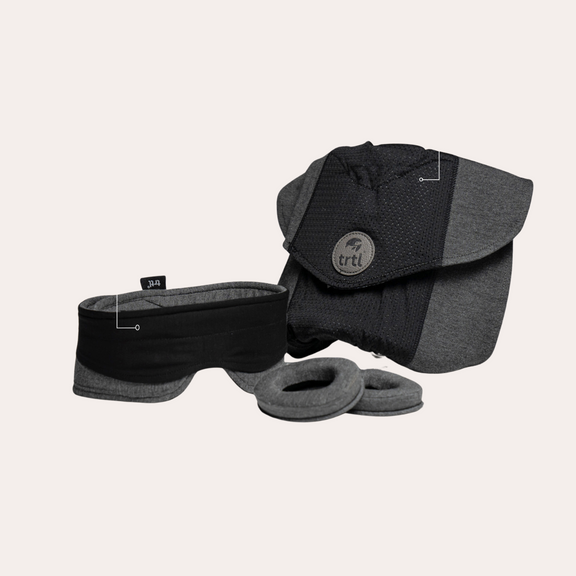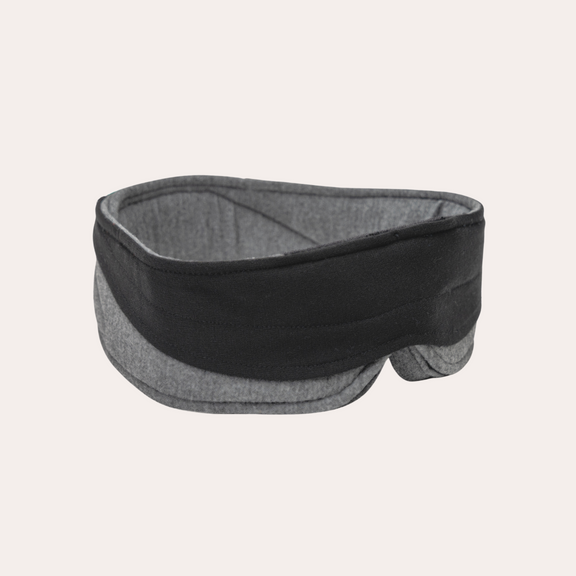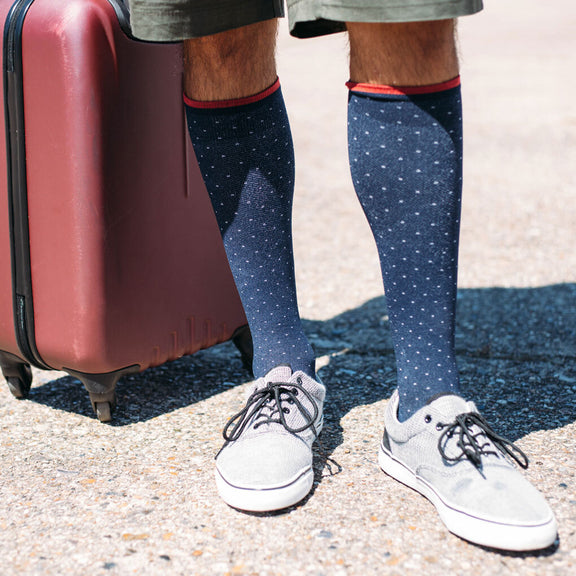Aug 14, 2023
What Are The Health Impacts of Poor Ergonomics on Planes?
By
Karin Svensson
What are the health impacts of poor ergonomics on planes?
From long-haul flights for sunny destinations to short trips to see the city, stepping foot on a plane to explore the world can be exhilarating. However, amidst the anticipation of your journey, have you ever paused to consider the toll it might be taking on your body?
With the average UK airline seat measuring just 43.18 cm in width, there’s no surprise that sitting in those seats for a flight can cause aches, pains and much more.
But it’s not all cloudy skies. The experts of flight comfort at Trtl Travel recently conducted a survey of 1,000 people in the UK to find out how comfortable they actually feel when they’re flying and what their experiences are like on planes.
Trtl Travel also reached out to a range of experts on posture, health and well-being to find out what the dangers are of airlines not offering the correct ergonomics, what more can be done to support flyers, and what people can do in the meantime to ensure maximum comfort when flying.
Key findings

84% of people surveyed stated that they found plane seats uncomfortable to sit in. Of these, over a third of people (36%) said that budget airlines offered the most uncomfortable seats. These cheaper airlines often prioritise cost-cutting measures to offer lower ticket prices to travellers, meaning one area that often bears the brunt of this is passenger comfort, particularly when it comes to seat design and spacing.
25% of people said that long-haul flights were more likely to cause discomfort, with over a fifth stating that all types of plane journeys were uncomfortable.
We also found that 75% of people we surveyed said that they had actually experienced pain in their neck, back, legs or joints as a direct cause of poor plane ergonomics. These figures rose to 84% if you were plus-sized, 90% if you were over 6ft tall and shockingly, 93% if you lived with a disability. On average, anyone living with disabilities, is plus-sized, or was over 6ft tall was 16% more likely to experience pain as a result of poor ergonomics than someone who wasn’t.
Who are the UK’s worst airlines for poor ergonomics?
|
Airline |
Percentage of Votes |
|
Ryanair UK |
42% |
|
EasyJet |
28% |
|
British Airways |
10% |
|
Jet2 |
7% |
|
Wizz Air UK |
6% |
When asked what the biggest-offending UK airlines were for poor ergonomics when flying, Ryanair came out on top, with EasyJet following behind.
What’s interesting to note is that Ryanair, EasyJet, and Wizz Air are all predominantly known for their short-haul flights from the UK to destinations across Europe.
Budget airlines aim to fit as many passengers as possible on each flight to maximise revenue. This often means reducing the amount of space between seats, using lighter materials for seats which results in thinner padding and charging for seat selection, extra legroom, or more comfortable seats.
Ultimately, budget airlines opt for cost-efficiency and affordability to cater to a specific segment of travellers who prioritise price over comfort. While this can make air travel more accessible to a broader range of people, it often means that passengers need to contend with less comfortable seating arrangements.
What are poor plane ergonomics?
Poor plane ergonomics encompass a range of design and layout issues within an aircraft that collectively contribute to passenger discomfort and potential health problems. These shortcomings can arise from various elements, including everything from seat design to cabin layout and more.
Limited legroom — The distance between the rows of seats — also known as seat pitch — often becomes a prominent factor in cramped and uncomfortable flights. This restricts the space available for passengers to extend their legs, making it difficult to find a comfortable seating position, especially on long-haul flights.
What are the health risks if you’re uncomfortable on a flight?
We approached a series of posture, health and wellbeing experts for their insights and what more airlines like Ryanair and Easyjet can be doing to prevent long-term injuries of customers.
Here are some of the most common health risks you can experience if you’re uncomfortable on a flight.
1. Poor circulation
Planes can contribute to poor circulation due to a wide range of factors such as limited legroom, prolonged periods of sitting, and reduced cabin air pressure. The cramped seating arrangements can impede blood flow, particularly in the lower extremities, leading to discomfort, swelling, and numbness.
Prolonged immobility during flights can contribute to the formation of blood clots, a condition known as deep vein thrombosis (DVT). The cabin's lower air pressure at cruising altitude can also impact oxygen levels in the blood, further affecting circulation. Collectively, these factors can result in decreased blood circulation and increased risk of circulation-related discomforts during air travel.
2. Deep Vein Thrombosis (DVT) leading to Pulmonary embolism
Deep Vein Thrombosis is a condition where blood clots form in the deep veins, often in the legs. Poor plane ergonomics, especially limited legroom and minimal opportunities to move around, can contribute to the risk of DVT. Long flights with little leg movement can impede blood circulation, increasing the likelihood of clot formation.
Kieran Sheridan, a board-certified physiotherapist based in the UAE and co-founder of GulfPhysio.com, states that “Prolonged sitting without proper leg movement and blood circulation can increase the risk of DVT. If a clot breaks loose and travels to the lungs, it can result in a life-threatening condition known as pulmonary embolism.”
While rare, a pulmonary embolism is a sudden blockage in your pulmonary arteries, blocking the flow of blood to the lungs. If not treated quickly, it can be extremely life-threatening.
Sarah Shah, a yoga instructor and Life and Wellness Coach, shared her near-death experience with a pulmonary embolism that occurred as a direct result of poor ergonomics on a long-haul flight.
“During a long-haul flight back to the UK, I started feeling extremely unwell. Things took a turn for the worse when I fainted. It was a frightening experience, and I knew something was wrong.
Seeking medical help, I visited a walk-in clinic in London for a check-up. Sadly, they couldn't determine the cause of my illness. With the uncertainty still lingering, I had no choice but to fly back to Cape Town the next day. As soon as I arrived, I went straight to my GP. It was then that tests were conducted, revealing that I had a pulmonary embolism. The news was shocking, and I was immediately hospitalised.
The doctors informed me that I was incredibly fortunate to be alive, considering that I had flown for 12 hours with the Pulmonary Embolism already developed. It was a sobering reminder of just how fragile life can be.”
3. Musculoskeletal discomfort
Due to the cramped and often ergonomically inadequate seating arrangements, planes can lead to something called musculoskeletal discomfort, which is an acutie or chronic pain that affects the bones, muscles, ligaments, tendons and nerves. Things like limited legroom, narrow seats and lack of proper lumbar support can strain your muscles and disrupt the natural alignment of the spine, leading to discomfort and stiffness.
Prolonged periods of sitting with little opportunity for movement can exacerbate these issues, as well as potentially contribute to lower back pain and overall muscle aches.
4. Neck and shoulder strain
Neck and shoulder strain can be a big contributor to the pain that people experience when flying, primarily due to the combination of cramped seating and inadequate headrest design.
The limited space for movement and the challenge of finding a comfortable position can lead passengers to adopt awkward postures that strain the neck and shoulders. Unsupported headrests, or ones that are improperly positioned, can prevent passengers from resting their heads, causing them to hold their necks at uncomfortable angles. These factors, combined with the inability to stretch or adjust adequately, can result in heightened tension and discomfort in the neck and shoulder areas during and after flights.
Kieran also states that neck and shoulder strain “can disrupt your sleeping patterns during long flights, which can worsen jet lag, resulting in more extreme fatigue, insomnia, irritability, and difficulties in concentration.”
What can airlines do to support passengers?

(Credit: Hanson Lu)
With over 75% of people we surveyed stating that they have experienced pain from flying, it begs the question of why airlines aren’t already doing more to support improving these conditions on their flights.
Sarah stated that: “Airlines should proactively provide information and resources on proper posture, ergonomics, and exercises that passengers can do during the flight to prevent discomfort and stiffness.
In-flight magazines or entertainment systems can include instructional videos or articles on maintaining good posture. Also, offering adequate pillows, blankets, or cushions that provide additional support can help.”
Elloise Allexia, psychotherapist, fitness & pilates instructor, explained that current plane seat ergonomics aren’t adaptable enough for our bodies: “The difficulty with plane seats is their inability to be significantly adjusted - because we all have sized different bodies, it's difficult to have a single chair that would be ideal for every traveller.”
To properly enhance passenger comfort on flights, airlines can offer:
What can passengers do to prevent discomfort on planes?
A survey conducted by the British Chiropractic Associations shows that a third of young people in the UK have been warned that they have bad posture but have taken no action. 42% said that they considered poor seating ergonomics a significant contributor towards the pain and discomfort they felt as a result of their posture.
With this in mind, we wanted to find out from posture experts what more people can be doing before and after flying to try and mitigate pain or discomfort caused by the bad ergonomics on common UK airlines.
1. Consult your doctor
Seeking proper medical advice provides a comprehensive health evaluation to determine whether the discomfort you’re experiencing from flying is cause for concern.
Kieran Sheridan states that: “It's essential for passengers, especially those with pre-existing health conditions, to consult their healthcare provider before travelling, particularly on long flights, to discuss any special precautions they should take to ensure a safe and comfortable journey.”
Consulting your doctor before you travel can be a great forward step in preventing or taking action on any illnesses that may potentially be exacerbated while flying.
2. Keep active before and after your flight
Elloise, fitness & pilates instructor, advises that keeping active both before and after your flight is the best way to prevent injury. “Before travelling, it might help to do some mobility work in order to work the range of motion of your joints to warm up and mobilise the body. After travelling, it might feel good to take some longer, restorative stretches.”
Here are some exercises you can consider doing before and after your flight:
3. Use a travel pillow
Abbas Kanani, a pharmacist at Chemist Click Online Pharmacy, advises that passengers should “consider using travel pillows or neck pillows that provide adequate support for your neck and head. Additionally, a lumbar cushion or a rolled-up towel placed behind your lower back can help maintain the natural curve of your spine.”
Using a travel pillow offers a wide range of benefits that can contribute to your comfort and well-being whilst you travel. Essentially, it provides neck support, helping maintain proper alignment and prevent neck strain or discomfort. By reducing muscle tension in the neck and shoulders, travel pillows are the ultimate accessory!
How Trtl Travel can help
At Trtl Travel, we have a wide range of products specifically designed to help your comfort levels while travelling.

Our Trtl Pillow Original is the only travel pillow to completely support your head for maximum comfort, ensuring no neck pain, strains or aches. It also helps to relieve stress on your spine and muscles, and with the cosy shoulder support that fits snuggly, your head falls into a more natural position.

If you’re looking for the world's first fully adjustable travel pillow that fits all heights, from petite to tall, then look no further than the Trtl Pillow Plus. This design ensures that the internal support provides premium comfort, keeping your head and neck in an ergonomic position that won’t cause strain on your upper body. The breathable mesh fabric also helps to regulate temperatures and has luxury foam padding for added comfort when travelling.

To promote proper circulation in your legs, our Trtl Travel Socks are designed with a gentle compression of 15-21mmHg to reduce swelling. Compression socks are great at helping to prevent DVT, which can be a serious problem for people when travelling. Available in three sizes, you’ll be able to find the perfect size no matter what.
But it isn’t just products that can help. Michael Corrigan, co-founder of Trtl Travel, states: “It's clear that the comfort and well-being of passengers should be a top priority for airlines. While travel pillows play a vital role in enhancing passenger experience, the onus shouldn't solely rest on passengers to seek solutions. Airlines must take proactive steps to create a more comfortable environment. It's a shared responsibility to ensure that travellers arrive at their destinations feeling refreshed, and it's time for the industry to recognise the importance of investing in passenger comfort beyond the seats they offer."
No matter where you’re jetting off to, you want to do it in comfort. At Trtl Travel, our travel pillows will leave you feeling refreshed at your destination, whether it’s a quick trip of a few hours or a long-haul flight.




















